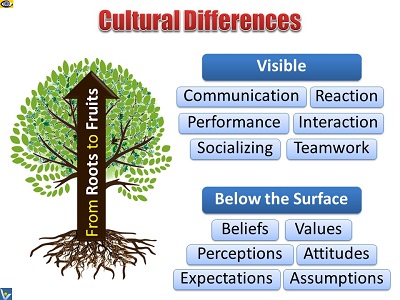 |
|
In today's globalizing world, cultural
intelligence is a necessary tool for every manager who deals with
diverse
teams of employees, customers, partners, competitors, government,
and other business players.
Some aspects of culture are easy to
see, but the most challenging parts of other cultures are hidden.
|
|
 |
|
Some aspects of culture are easy to
see, the obvious things like art and music and behavior.
However, the significant and most
challenging parts of other cultures are hidden.
These might include our beliefs,
values, expectations, attitudes, and assumptions. |
|
 |
People are not divided into us and them,
they are divided into
wise ones and fools, and it is the
fools who divide themselves into us and
them. |
 VadiK
VadiK |
|
Inventor
Author
Founder |
 |
The bird thinks it is an act of kindness to give
the fish a lift in the air. |
Tagore |
| |
|
How to use this information
|
|
|
| |
①
"A child of five would
understand this. Send someone to fetch a
child of five."
~
Groucho Marx
② "Adapt what is useful, reject
what is useless, and add what is
specifically your own."
~
Bruce Lee
|
|
 |
|
|